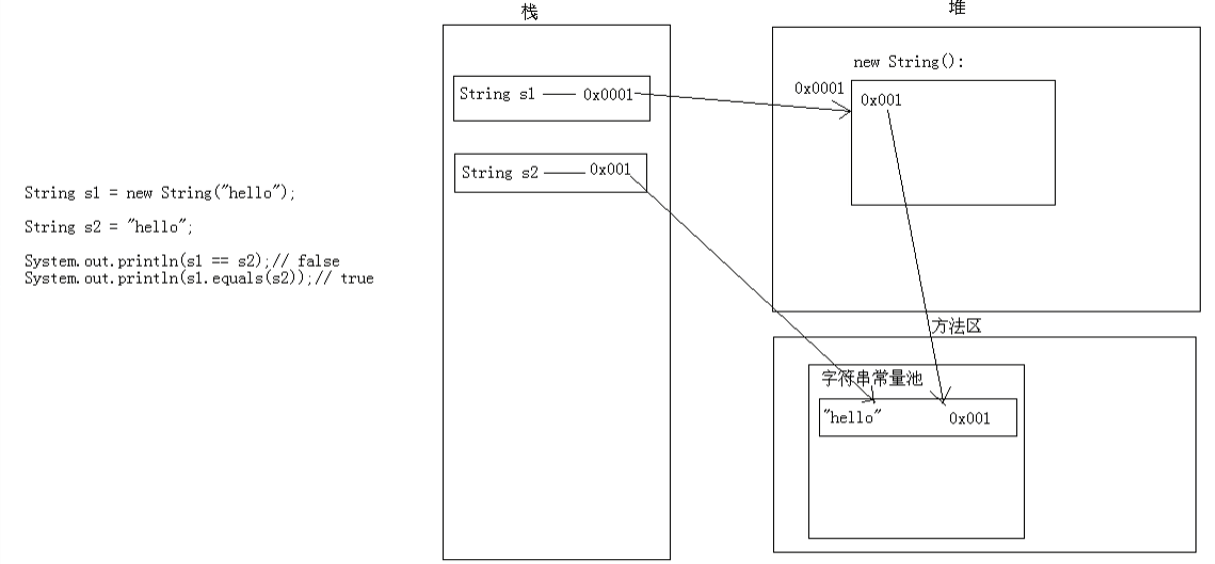看程序写结果1:
==:比较引用类型时 比较地址值是否相同
equals:只比较引用类型 比较地址值是否相同
而String类重写了equals()方法,比较的是内容是否相同
/*
* 看程序写结果
*
*/
public class StringDemo1 {
public static void main(String[] args) {
String s1 = new String("hello");//在常量池中查找"hello",如果没有则在常量池中创建“hello”字符串
String s2 = new String("hello");//此时常量池中已经存在"hello"字符串,所以不需要新创建,直接拿过来
System.out.println(s1 == s2);// false
System.out.println(s1.equals(s2));// true
String s3 = new String("hello");
String s4 = "hello";
System.out.println(s3 == s4);// false
System.out.println(s3.equals(s4));// true
String s5 = "hello";
String s6 = "hello";
System.out.println(s5 == s6);// true
System.out.println(s5.equals(s6));// true
}
}
内存描述图可以清楚地表达:
看程序写结果2:
字符串如果是变量相加,先开空间,再拼接。
字符串如果是常量相加,是先加,然后在常量池找,如果有就直接返回,否则,就创建。
/*
* 看程序写结果
*
*/
public class StringDemo2{
public static void main(String[] args) {
String s1 = "hello";
String s2 = "world";
String s3 = "helloworld";
System.out.println(s3 == s1 + s2);// false--s1、s2都是变量,做字符串拼接时,是先开空间再拼接,新的空间地址值肯定不一样了
System.out.println(s3.equals((s1 + s2)));// true
System.out.println(s3 == "hello" + "world");// false 这个我们错了,应该是true---先把"hello" 和 "world"两个常量加起来,看方法区中的常量池中是否有相应的,这时在常量池中找到了"helloworld",
System.out.println(s3.equals("hello" + "world"));// true
// 通过反编译看源码,我们知道这里已经做好了处理。
// System.out.println(s3 == "helloworld");
// System.out.println(s3.equals("helloworld"));
}
}






















 326
326

 被折叠的 条评论
为什么被折叠?
被折叠的 条评论
为什么被折叠?








